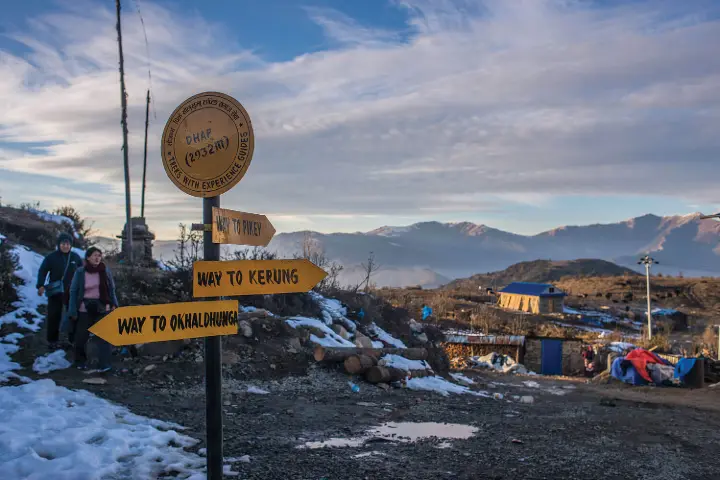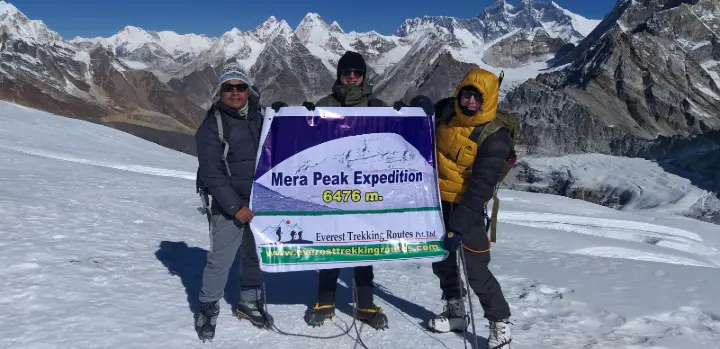Nepal, a place where the Himalayas paint the skyline and antiquated societies whisper through mountain winds, offers a few of the most notorious trekking and climbing encounters in the world. Among the endless organized trails that cross this Himalayan country, four experiences stand out as the finest for those looking for nature, culture, isolation, and challenge: the Annapurna Circuit trek, Langtang Valley trek, Pikey peak trek, and Mera peak Climbing.
This directly jumps profoundly into each trek—highlighting their appeal, scenes, trouble, social abundance, and what makes them must-do encounters for trekkers and climbers in 2025 and beyond.
Annapurna Circuit trek – A Himalayan Classic
Overview
The Annapurna Circuit trek is frequently hailed as one of the world’s most wonderful long-distance climbs. It circles the Annapurna Massif, advertising a clearing of biological systems, societies, and awe-inspiring mountain sees. With its blend of subtropical woodlands, elevated territories, and stark high-altitude deserts, this circuit is a microcosm of Nepal’s topographical diversity.
Duration: 14–18 days
Most elevated Point: Thorong La Pass (5,416m)
Trouble: Direct to Challenging
Highlights:
Crossing the Thorong La Pass, one of the most elevated trekking passes in the world.
Dramatic changes in landscapes—from the rich Marsyangdi Valley to the parched Bronco region.
Cultural inundation in Gurung, Thakali, and Tibetan-influenced villages
Soothing hot springs at Tatopani.
Views of Annapurna I, Dhaulagiri, Manaslu, and Machapuchare.
Why Select This Trek?
It’s a classic for great reason. You involve everything Nepal has to offer in one trek—lush woodlands, snow-capped peaks, Buddhist religious communities, and Hindu sanctuaries. The differences of this circuit is unmatched.
Langtang Valley trek – The Covered up Jewel Close Kathmandu

Overview
Settled north of Kathmandu close to the Tibetan border, the Langtang Valley trek is a moderately calm path that combines tall elevated views with wealthy social conventions. In spite of the fact that it is less swarmed than Everest or Annapurna, Langtang conveys a similarly dazzling experience.
Duration: 7–10 days
Most noteworthy Point: Tserko Ri (4,984m)
Trouble: Moderate
Highlights:
Magnificent dawn and all encompassing sees from Tserko Ri.
Traditional Tamang and Tibetan Buddhist culture.
The sensational Langtang Lirung Glacier.
Visits to old Kyanjin Gompa monastery.
Optional side trip to Langshisa Kharka or icy mass walks.
Why Select This Trek?
Perfect for trekkers looking for tranquility and social lavishness near Kathmandu, Langtang offers marvelous views without the long travel times or swarms. It’s too a sincere tribute to the strength of the locale post-2015 earthquake.
Pikey peak trek – The Best See of Everest, They Say

Overview
If you're looking for a brief, off-the-beaten-path trek with jaw-dropping Himalayan scenes, see no encouragement than Pikey peak trek . This less-traveled path in the lower Solu locale offers what Sir Edmund Hillary allegedly claimed were the best in all of Nepal.
Duration: 5–8 days
Most elevated Point: Pikey peak (4,065m)
Trouble: Simple to Moderate
Highlights:
Sunrise seen from Pikey peak, exhibiting Everest, Kanchenjunga, Lhotse, and Makalu.
Traditional Sherpa culture and monasteries.
Peaceful path, perfect for isolation seekers.
Forests of rhododendrons, particularly dynamic in spring.
Less commercialized encounter than Everest Base Camp.
Why Select This Trek?
Pikey peak culminates for travelers brief on time but enormous on sees. It’s a trek that combines Everest vistas with true Sherpa hospitality—without the height strain or overwhelming foot traffic.
Mera peak Climbing – A Himalayan Mountaineer’s Dream

Overview
For explorers prepared to step past trekking and into Himalayan mountaineering, Mera peak climbing (6,476m) is the extreme entry-level climb. Nepal’s most elevated trekking top, Mera offers both a physical challenge and unmatched all encompassing sees of five 8,000-meter giants.
Duration: 18–21 days
Most noteworthy Point: Mera peak Summit (6,476m)
Trouble: Challenging (requires essential climbing skills)
Highlights:
Summit see of Everest, Lhotse, Makalu, Cho Oyu, and Kanchenjunga.
Trek through the farther Hinku Valley.
Experience of ice sheet travel, utilization of crampons and ice axes.
Authentic Sherpa towns off the standard routes.
Pre-climb acclimatization at Khare.
Why Select This Climb?
If you’ve trekked Nepal and are prepared for something greater, Mera peak is a consistent following step. In spite of the fact that specialized abilities required are negligible, it still conveys the excitement of Himalayan climbing—standing on a peak over 6,000 meters.
Cultural Experiences Along the Way
Each of these courses offers a see into Nepal’s exceptional ethnic mosaic:
Annapurna Circuit winds through Hindu towns in the swamps and Tibetan Buddhist communities in the highlands.
Langtang Valley is home to the Tamang individuals, with near ties to Tibetan culture.
Pikey peak permits hints of experiences with Sherpa families and their otherworldly traditions.
Mera peak Climbing takes you through untouched Sherpa settlements where antiquated conventions live on in everyday ceremonies and mountain beliefs.
When to Go: Choosing the Right Season
Spring (March to May): Rich greenery, sprouting rhododendrons, and steady climate. Perfect for all four routes.
Autumn (September to November): Clear skies and fresh discussion. Best for high-altitude climbs like Mera peak and Thorong La Pass.
Winter (December to February): Pikey peak and Langtang are still open, in spite of the fact that higher passes like Thorong La may be near due to snow.
Monsoon (June to August): Maintain a strategic distance from high-altitude treks; lower rise treks like Pikey peak are conceivable but muddy.
Tips for Trekking and Climbing in Nepal
Train in Development: Whether trekking or climbing, get ready with cardio, quality, and height acclimatization if possible.
Go with a Direct: Particularly for Mera peak and Annapurna Circuit, where climate and route can be unpredictable.
Travel Protections: Make beyond any doubt it covers high-altitude trekking and helicopter evacuation.
Respect Nearby Societies: Learn essential welcome in Nepali or Tibetan, and continuously inquire some time recently capturing individuals or devout sites.
Stay Hydrated and Eat Well: Tall heights can smother craving, but nourishment and hydration are crucial.
Sustainability and Local Impact
Each of these treks underpins neighborhood economies. By choosing locally-run lodges, watchmen, and guides, you contribute straightforwardly to the well-being of communities still recuperating from normal catastrophes and financial hardships. Economical travel practices—like minimizing plastic use and regarding neighborhood customs—are imperative to keeping Nepal’s trails as flawless as its peaks.
Final Thoughts: Which is Right for You?
First-time trekkers might begin with the Pikey peak trek for its moon height and epic views.
Culture partners and return guests may favor the Langtang Valley trek for its profound association to Tibetan heritage.
Experienced trekkers prepared for experience and height will cherish the Annapurna Circuit Trek.
Ambitious climbers with trekking involvement ought to handle Mera peak Climbing for a Himalayan summit of their own.
Nepal isn’t a fair place—it’s a feeling, an arousing. Whether you’re chasing a summit or taking after a path through rhododendron timberlands, these four undertakings offer everything: magnificence, meaning, and memories.
FAQs
Q: Do I require licenses for these treks and climbs?
Yes. Each locale requires TIMS cards and nearby preservation zone licenses (ACAP, Langtang NP, etc.). Mera peak too requires an extraordinary climbing permit.
Q: Are these treks secure for solo travelers?
Yes, but it’s prescribed to enlist a direct, particularly for higher and more inaccessible ranges like Mera Peak.
Q: What is the nourishment like on these treks?
Anticipate dal bhat (rice and lentils), momos (dumplings), pasta, soups, and Tibetan bread. Indeed inaccessible teahouses give warm, generous meals.
Q: Is elevation ailment a concern?
Yes, particularly on Annapurna Circuit and Mera peak. Appropriate acclimatization and hydration offer assistance to anticipate it.
Contact Details
Company address: Everest Trekking Routes Pvt. Ltd.
16 Khumbu, Nayabazaar, Kathmandu, Nepal
Mobile : +977-9843467921 (Rabin)
Email: info@everesttrekkingroutes.com
URL:- www.everesttrekkingroutes.com